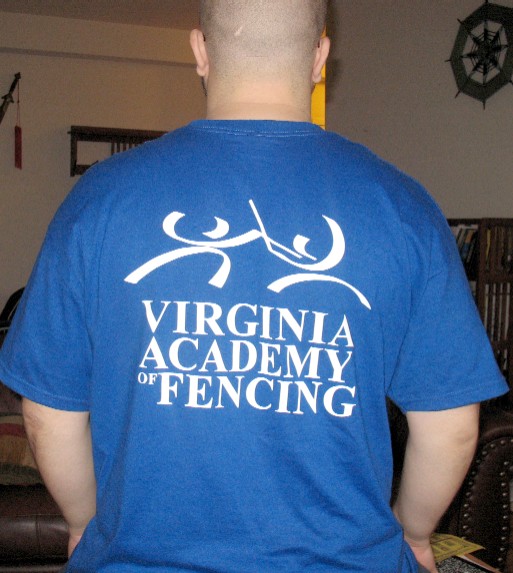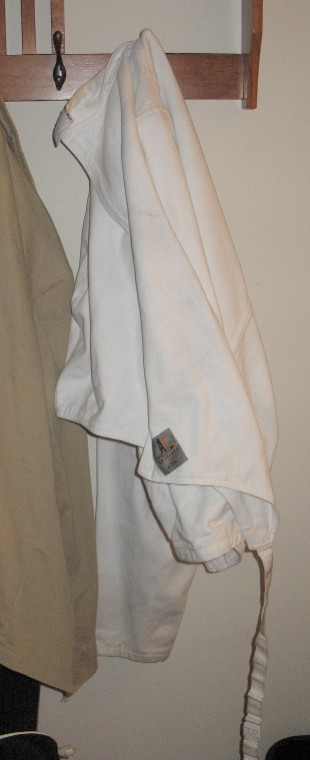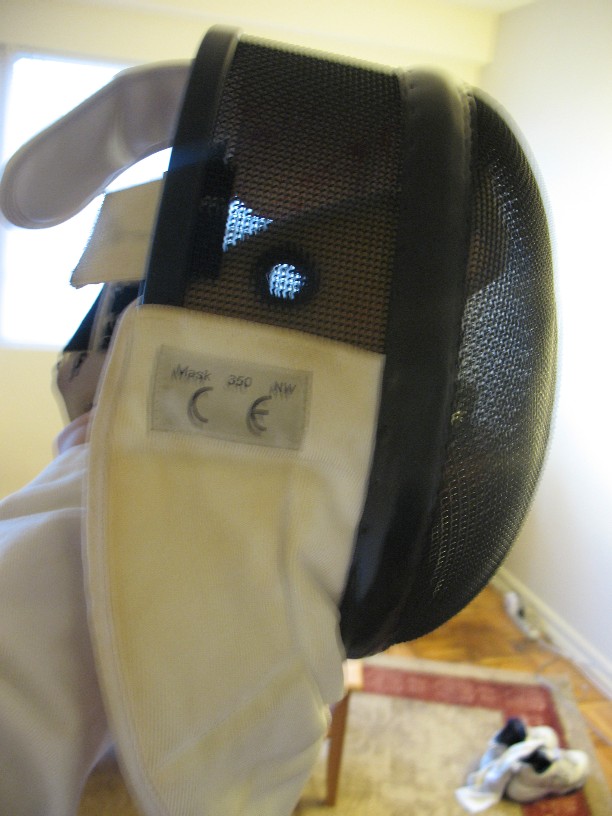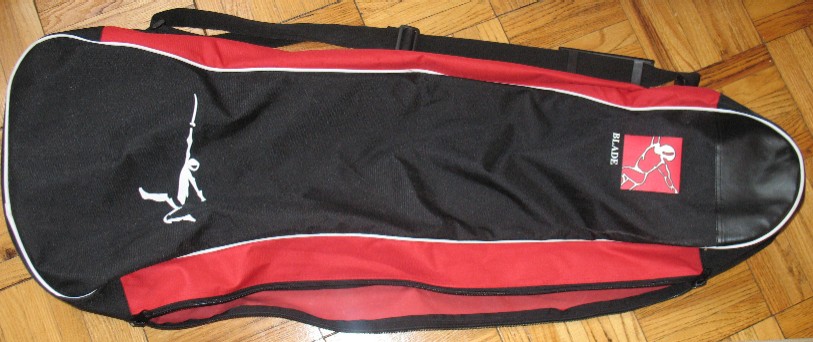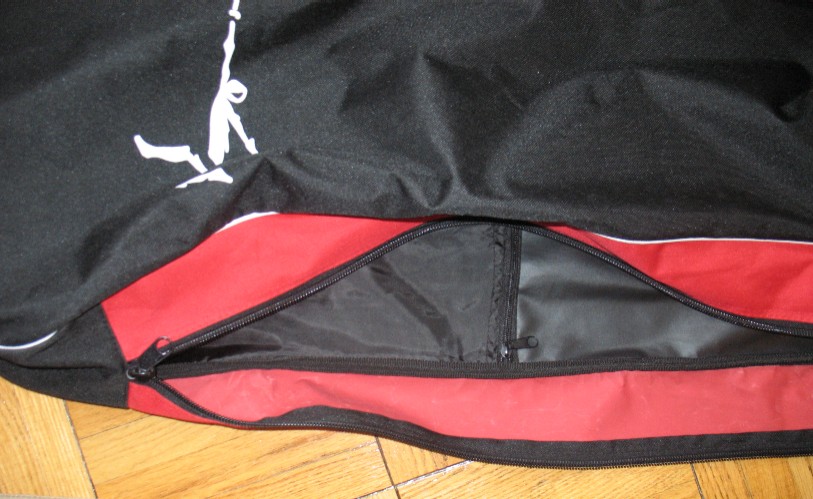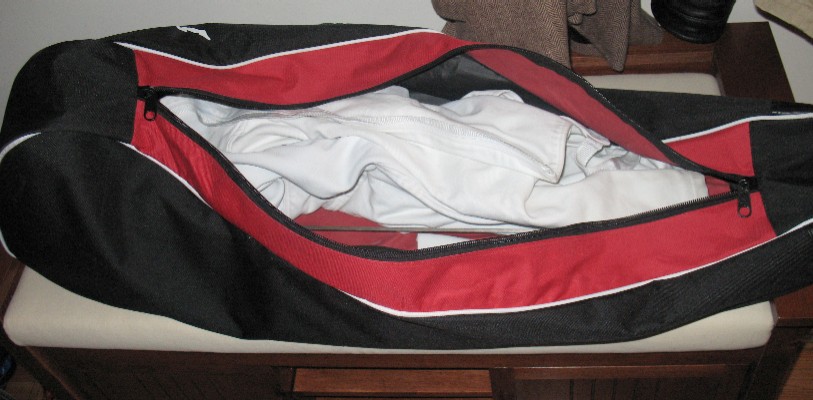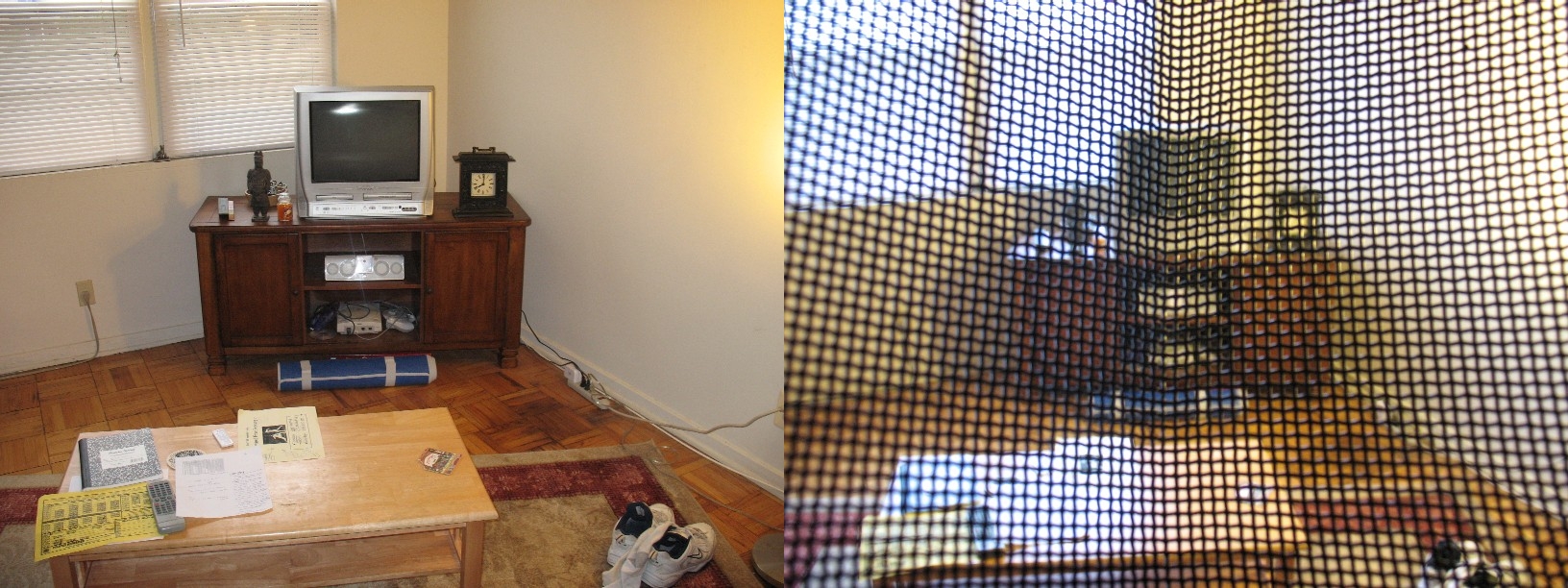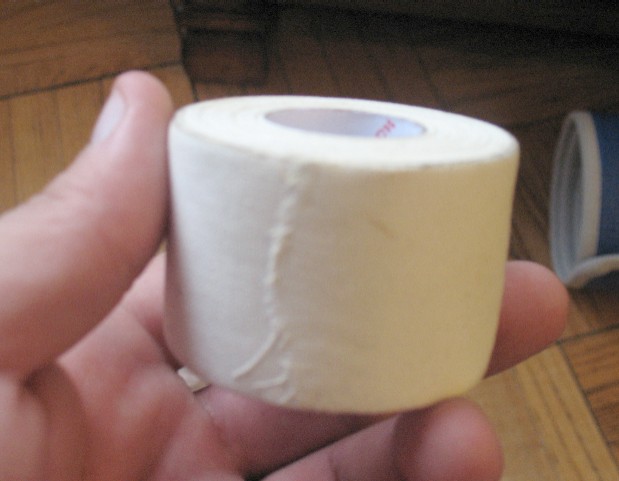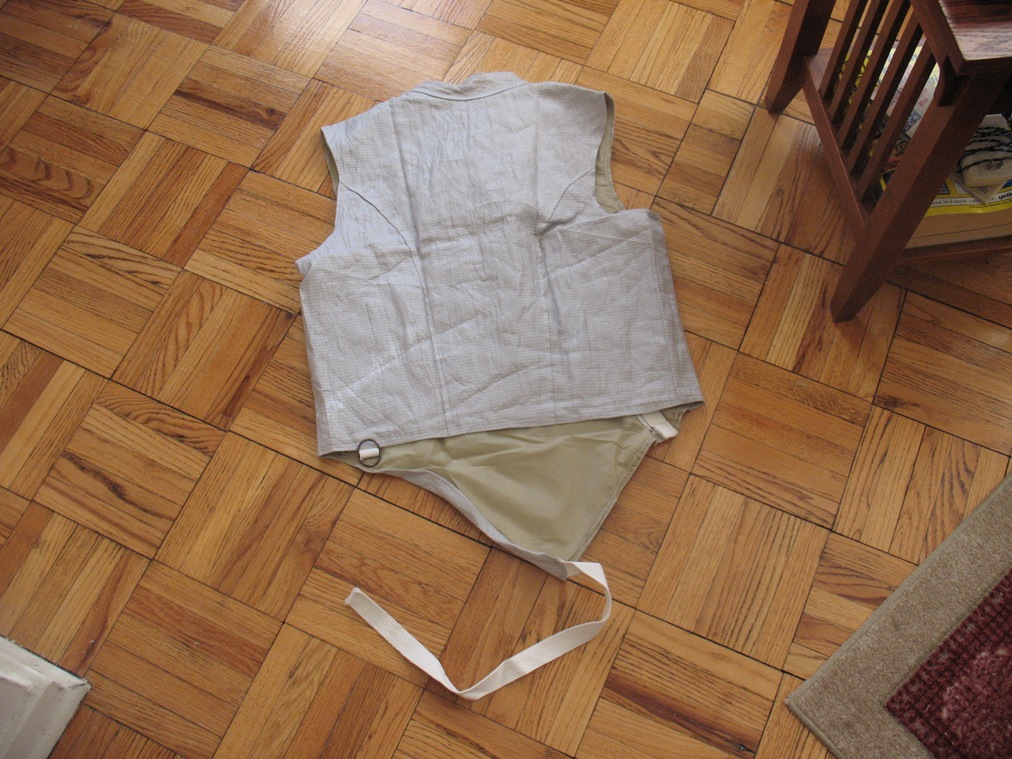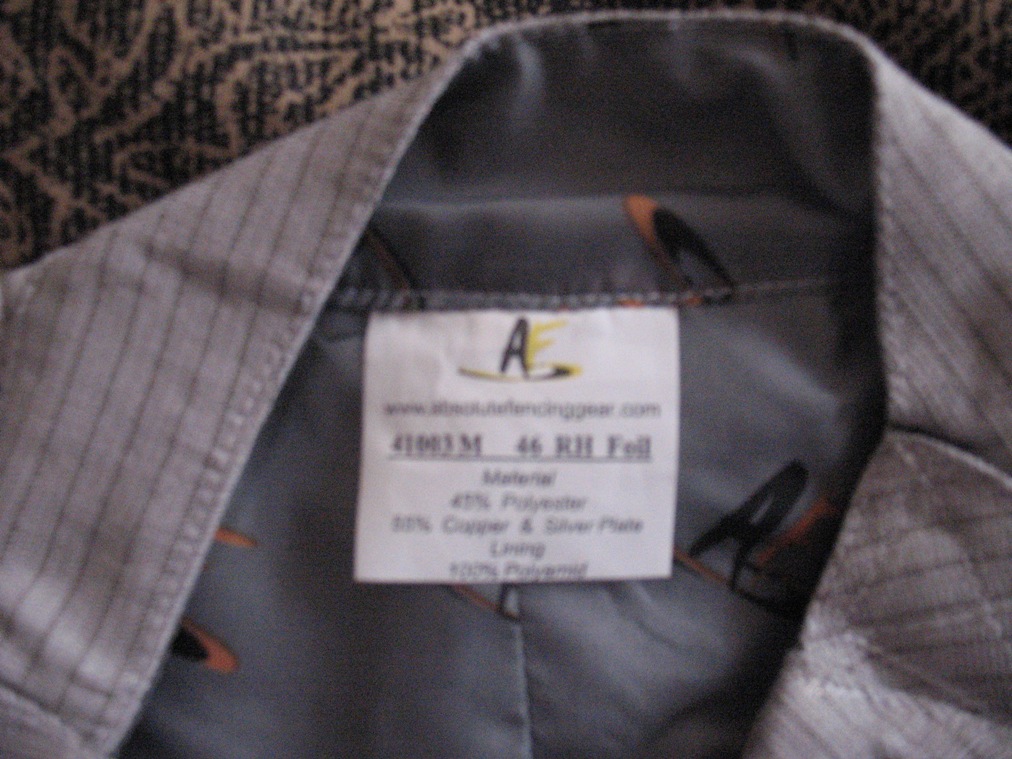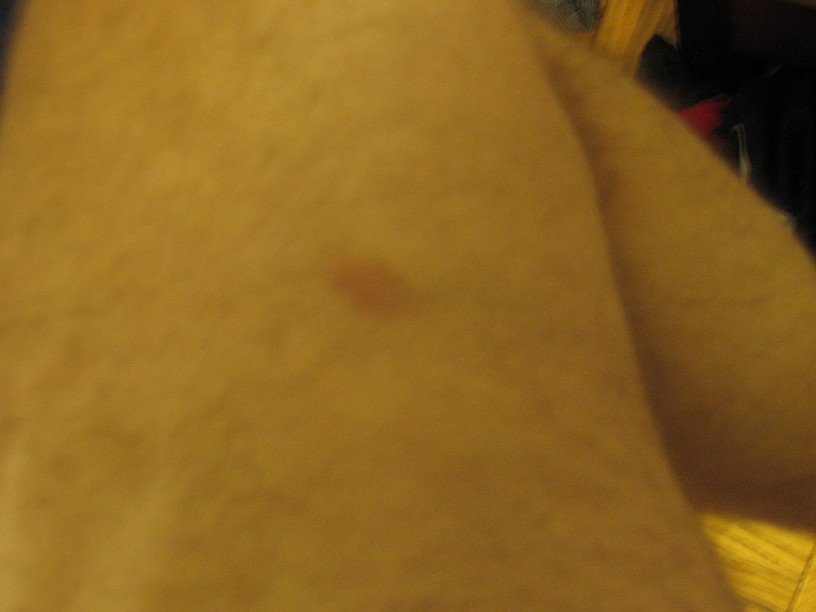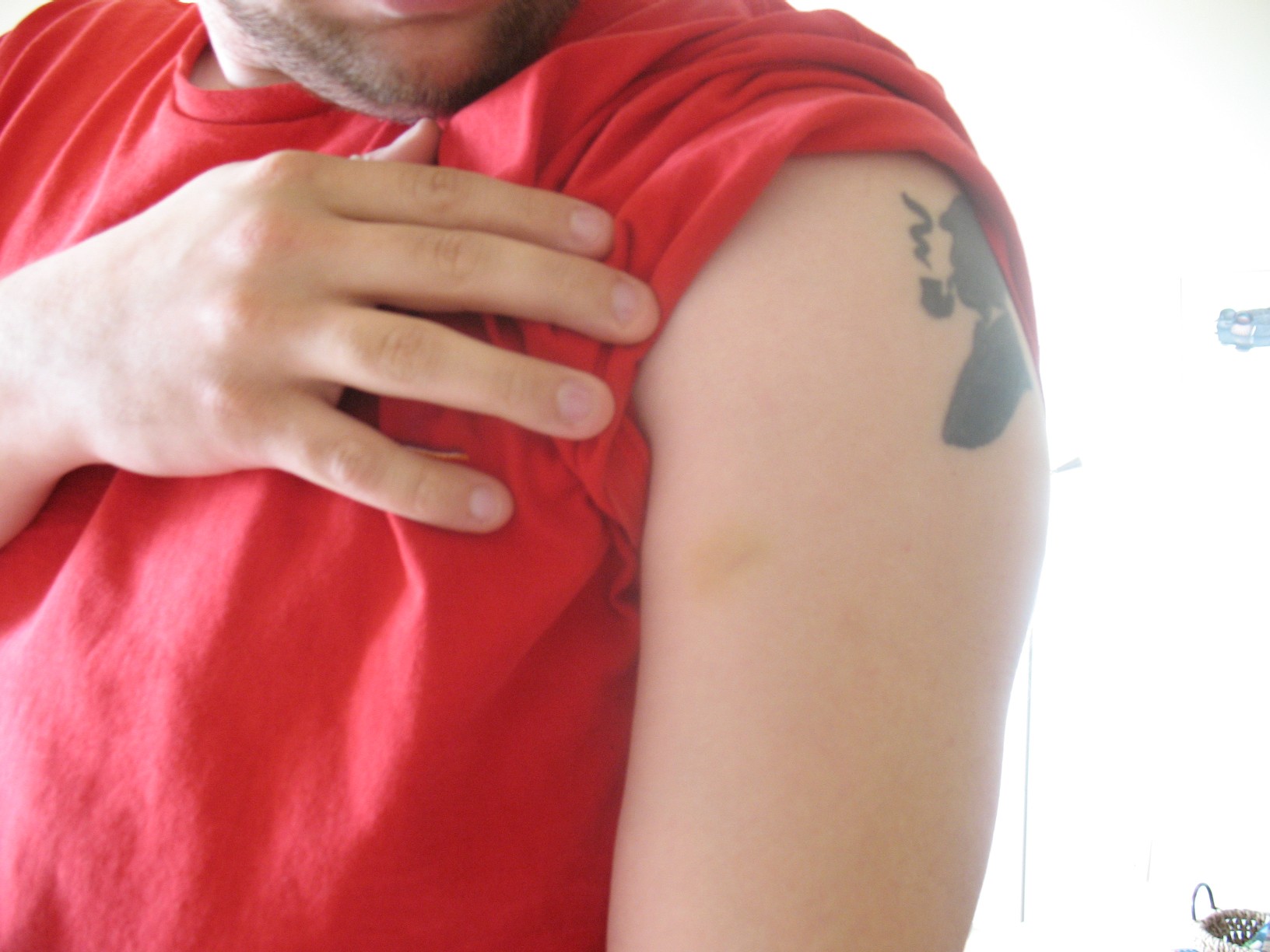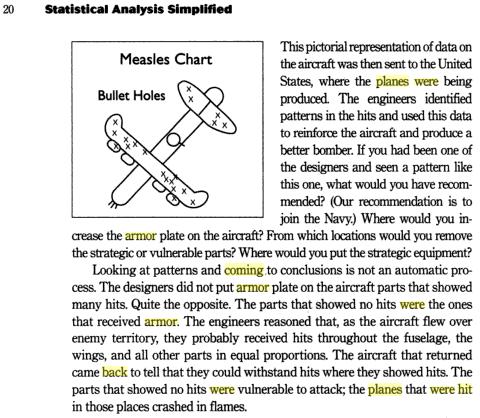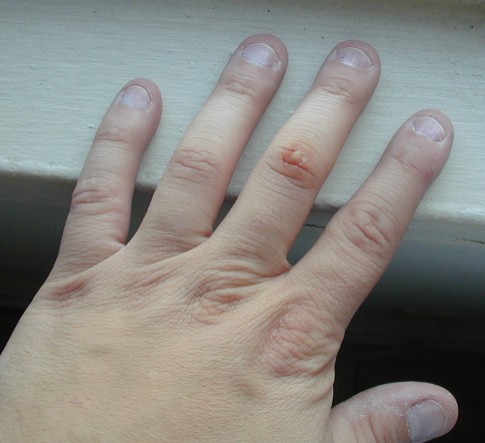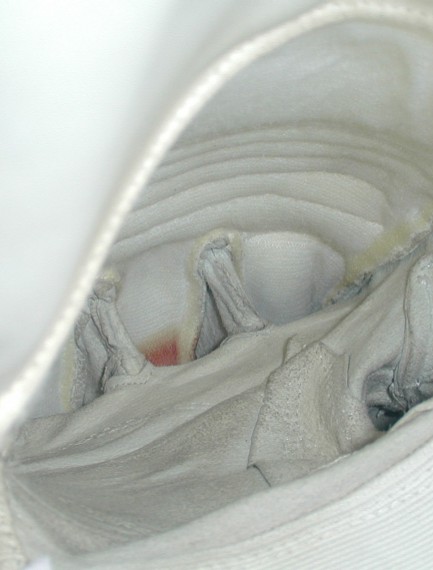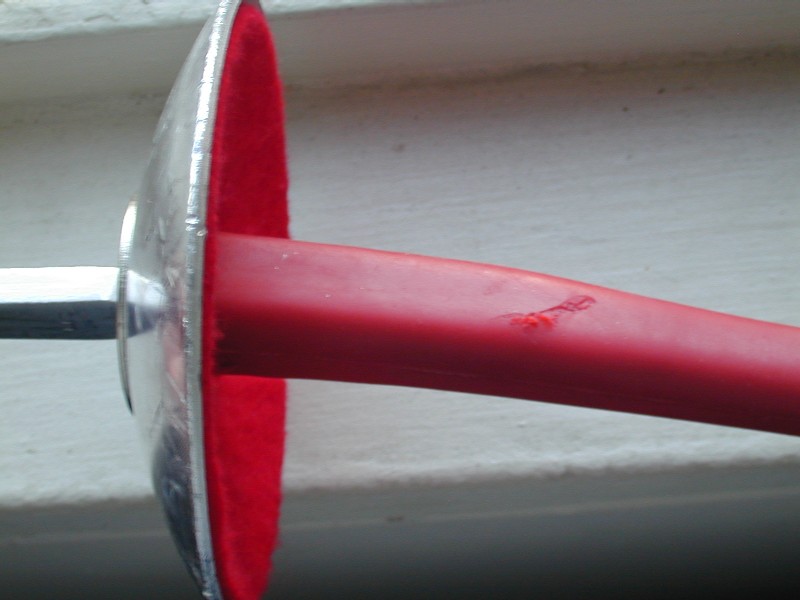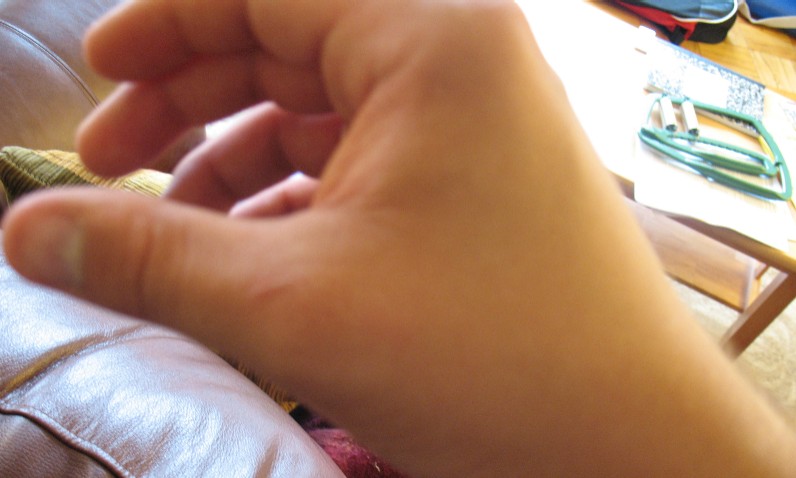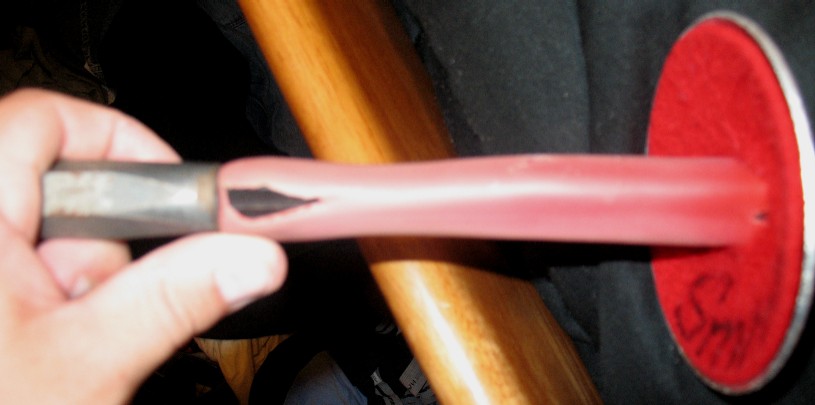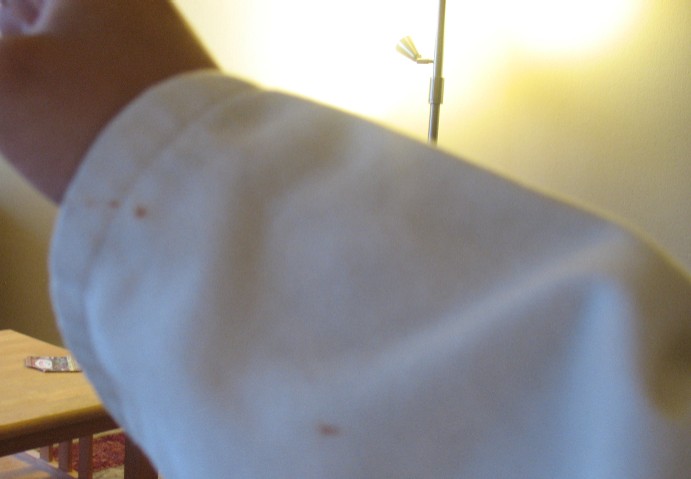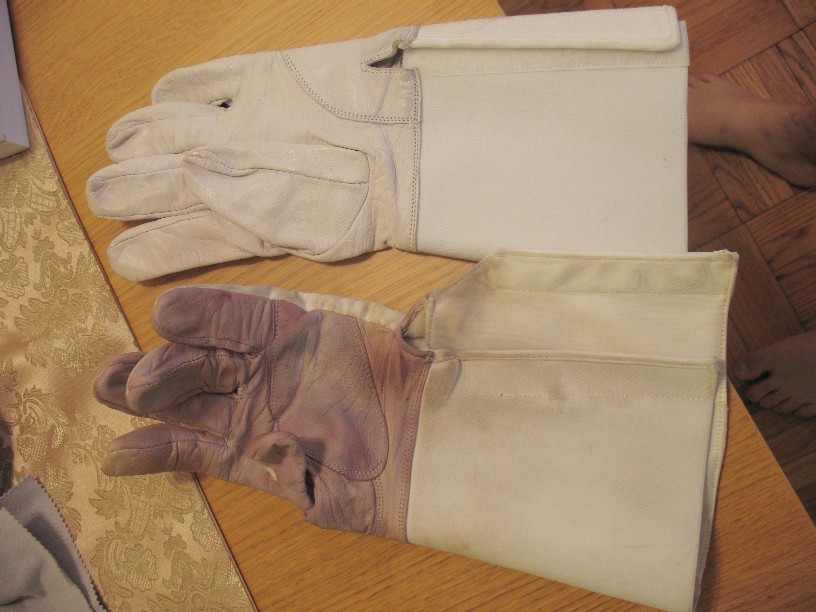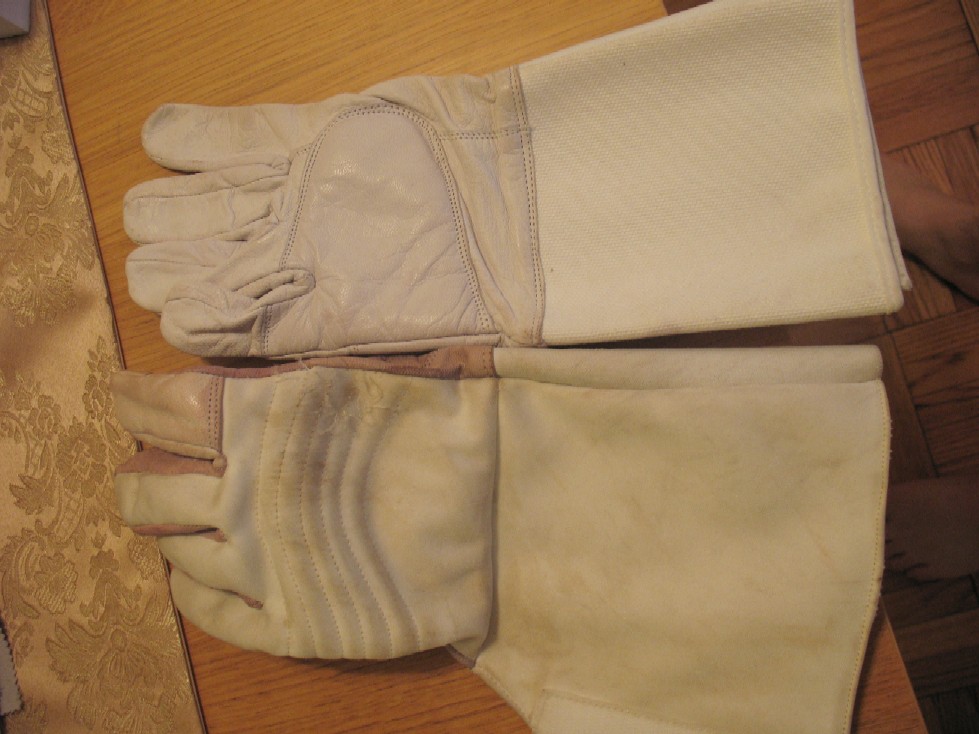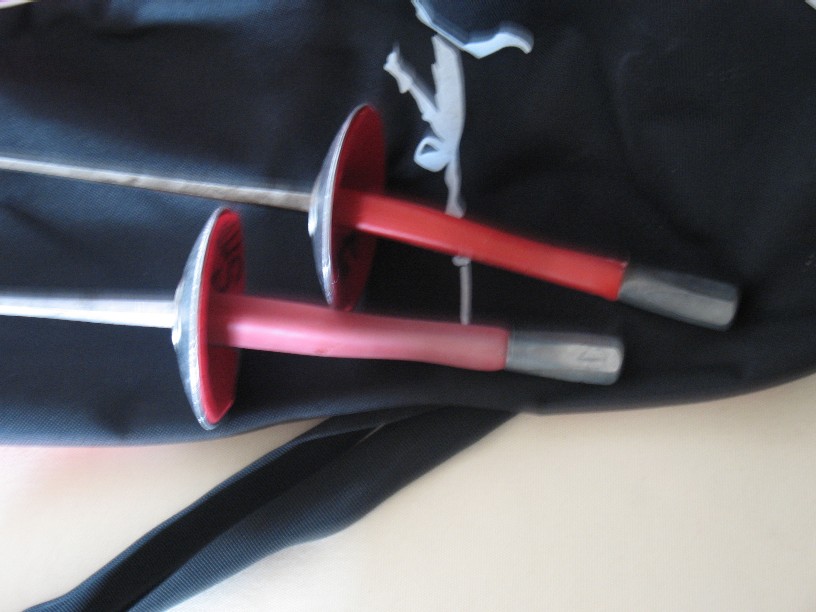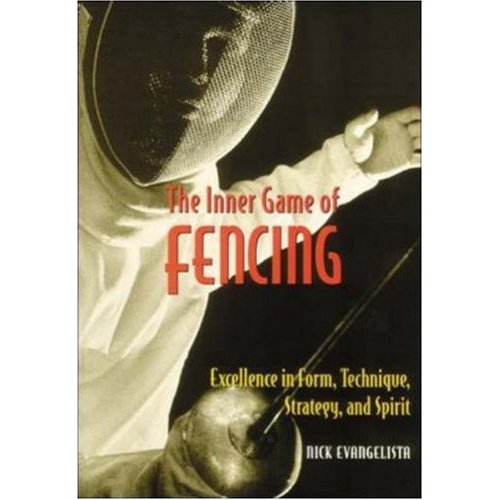Beginning Fencing Experience
8/2007
Hi. I regularly practice Olympic foil fencing. I had my first fencing class, Beginner 1, in Jan. 2006, and have been fencing ever since. Before I started fencing, I scoured the web for information on what to expect when starting out fencing. While I found a lot of useful information, I noticed a lot of it lacked the detail that I was craving.
I've been keeping a detailed fencing journal since Jan. 2006, and this webpage is a selection from my journal. I'm sharing it with people considering the fencing path with the hopes that it gives them some more information to help make their decision.
As mentioned, I looked all over the web for fencing forums for information, and did this for a few months. A website I found really useful is Fencing.net. It has news, a store, equipment reviews, photo gallery, as well as a discussion forum. After reading around, I started doing Google searches for fencing academies in my area. I checked out several. The one that caught my eye was Virginia Academy of Fencing. This place looks like it was originally a warehouse or factory, so it is really roomy. It has about a dozen fencing strips, a large viewing area, warm-up area, wall targets, gear to borrow for beginner classes, or if yours breaks or you forgot an item at home, changing rooms and bathrooms, showers, snack area with vending machines, water fountains, water cooler, a store, gift shop, and an armory. There are many world flags on the ceiling and fencing items on the walls. A selection of motivational posters on the wall read "Have you used your brain today?" and "It is always too early to quit."
The masters and coaches have an impressive backgrounds, including numerous champion titles, Professor of Fencing at several universities, Olympic coach, coach of national and international champions, and experience in complementary disciplines, such as other martial arts and archery. But this page isn't an advertisement for them. As "The World's Largest Fencing School" they don't really need my help, plus I'll have some healthy criticisms sprinkled in. I assume they are representative of the many great fencing academies that exist that you can find in your area.
I mentioned I started the Beginner 1 class in Jan. 2006. This class covered history of fencing and its transition into sport fencing, layout of the academy, safety, equipment, saluting, rules, right-of-way, keeping score, fencing strip layout, basic warm-up exercises, drills, foil fencing, en garde, advance, retreat, moving with an opponent, lunge, recover, 4/6 parries, and ripostes.
I started the Beginner 2 class Nov. 2006. This class reviewed in detail what Beginner 1 covered, disengage, beat, epee, sabre, and historical fencing introduction, electric foil fencing, remise, redoublement, more on body alignment, and options for academy membership.
I considered the membership options. At this level, interested students must sign a 12-month training agreement. Club membership is $50/month. Club membership + 1 weekly Intermediate group class is $120/month, and the costs increase, of course, if you want more classes or private classes. Membership includes a nice academy t-shirt, an academy mug, 10% discount on equipment and gift items in the store, attendance at future workshops, access to thrice-weekly supervised free fencing sessions (very valuable!), access to the academy anytime it is open (with the exception of tournaments, summer camps, etc.) for practice with others, or wall target or footwork practice, use of electric scoring equipment, and several other benefits.
I signed up and started the Intermediate class Jan. 2007. This is a class that has people who have been fencing for several months, a year, or even longer. So you get people who have your experience, as well as very advanced. At this level, you can choose which weapon to study in more depth. My experience with foil convinced me that foil is the way to go for me. The rich history of foil fencing, an effective thrusting weapon combined with the logic of right-of-way (see The Inner Game of Fencing by Evangelista, for information), and the large number of practice partners, made it an easy choice.
The class covered fencing conditioning, low line parries, making parries more efficient, coule, coupe, advanced footwork, composed attacks, and much more.
For this class I needed to purchase my own equipment. Fencing reminds me of golf in a way, in the sense that at first there is a little start up cost, but then after that, it isn't too bad. Here is the breakdown:
- dry foil, French grip: $55
- basic front-zip jacket: $117
- basic mask: $89
- leather glove: $30
- basic bag: $45
- Total: $336
Here are pics to show the view from inside the mask. There is actually much more visibility than what is shown, however.
I later bought a headband ($3) so the sweat wouldn't drip into my eyes (you will sweat), and some tip tape ($3) so I wouldn't keep having to ask the front desk to re-tape the tip of my foil when the tape comes off after several weeks of use.
Plus, you can always get even higher quality (of course that increases the cost) equipment. My one complaint is that it took about a month to get all the equipment because I ordered it 12/2006, so the shipping times coincided with holidays. I didn't receive all my equipment until mid Jan. 2007. This caused me to have to borrow some gear for my first couple of classes, which wasn't too bad, just annoying.
On that note, on 1/08 on I decided to add electric fencing to my skills and I placed an order for some electric gear. Here is that saga! I was told it would take 2 weeks time to deliver, and it basically did. However, this is what came:
Even a beginner like me could see that this lame' was not made correctly at all. There needs to be a double ring in the middle back, or a plastic clip, and there needs to be a single D-ring on the right hand side. I explained this to the gentleman working at the front desk, and another lame' was ordered.
A second lame' came several weeks later, and I was called that it had arrived. When I went to pick it up, the person at the desk could not locate it. I was called a day later saying it was nowhere to be found. So yet another order was placed. They were apologetic and gave me a $50 equipment credit.
I picked up the third lame' 4/5/08. It was physically there at least, so I put it in my fencing bag. When I got home I looked at it:
This is a properly constructed lame', but it is a right-hander's lame'. I require a left handed one since I fence left handed.
I returned this incorrect lame' in person 4/6/08 to the academy. The person at the front desk said they would order another one.
I was called 4/14/08 to say that the lame' arrived. I picked up this fourth lame' on 4/15/08, and it is correct.
Hey, these things happen. I did get an equipment credit and several months free for this issue. I also looked at it as a "sign" to not persue electric fencing. When in doubt, keep it Classical.
Because of fencing, I've had some fencing ideas, and I'd like to share a selection of ones that I've found useful.
March 2007 I'm taking pictures of the times and places where I get bruises from fencing. Fencing is a full contact (although with safety gear) and full resistance activity, so expect some bruises. I figure a large catalog of these bruises tells me what areas of my body I need to work on defending better in general. Also, pictures of these bruises can inform people what they can expect, especially parents who are concerned about their children. Here are some representative examples
This idea reminded me of
It is also important to note that there are additional safety gear one can purchase, such as chest, underarm, and groin protectors. These additional gear would help to minimize bruising. Also keep in mind that these are foil tip bruises. I understand that sabre bruises have a much larger "OUCH! factor" and look more impressive.
April 2007 I've thought about the idea of making a wall target that has 4-8 squares and one randomly selected square lights up and you lunge at that. Then after a slight pause, another randomly selected square lights up, and repeat. I reason this is a nice complement to a static target, because like in fencing you attack only based on what your opponent is showing you. It really makes one use their brain and prevents one from 'going through the motions'. It also can help prevent stagnation in workouts. I've seen some similar devices on the market, but they are either much too expensive, or much too videogame-like for my tastes. This idea fits in perfectly with my Weighted Exercise ideas.
Well, what about some "bad" things?
I saw someone sitting on the floor for about 10 minutes after twisting their ankle. They were apparently in some pain from the initial twist, but sat it out and they were not injured. I don't know what the academy's accident rate is, but for me participating and observing for several years with many hundreds of people in and out, what I've seen is extremely minor.
I've seen several people get temporarily winded after a foil went up and under the bib of the mask, touching them in the throat.
As for myself, I've mentioned the numerous bruises. I've also got a finger smashed with the guard of someone's foil. It tore up a small piece of skin on the knuckle, left some blood in my glove, and left the knuckle and surrounding area bruised and hurt for about a week. It kind of felt like getting your finger slammed in the door, maybe slightly less force. It also made a cut in the grip of my foil.
I've had a foil blade break against me which is a serious situation (because the tip of a broken foil is no longer foiled). The other person, who was at my level of experience too, realized what happened and we stopped and he got a foil from the academy rack to continue the session with.
I have also broken a foil blade myself on my own wall target at home, which was kind of shocking. And some time later I did it again!
Both just made a loud sound and flipped to the ground, leaving me holding what was left. Each blade cost $30 to replace at the academy armory.
Bent blades are commonplace. Most of my serious blade bending occured when I did a thrust and at the same time someone ran into my blade. So you have a force going --> and another force going <--. Something has to give, and luckily it is the safety weapon that will. You can straighten the blades out somewhat by bending it back with your hands, or using your feet and your hand. I like to bend them back by using it against a target. To help with prevention, some people get some PVC pipe and place their foil blade in that like a sheath before they put it in their bag.
I've received a slight cut on the thumb with the guard of someone's foil before.
I have what appears to be a permanent callus on the sole of my right foot (since I'm a lefty, I push off with my right foot)
I also had a grip that had the rubber coming off through use, which eventually had to be repaired, costing a few bucks.
I've also experienced rust. This happens from a lot of sweat on clothing which then gets to equipment.
Spot treatment works well with repeated washing for the jacket. For the swords, I've found that warm soapy water with steel wool works. But prevention is the best. I recommend putting a towel between sword and jacket after you are done, as well not leaving your jacket to dry in your bag!
One supervised practice session is so late that usually no one shows up. This can be good actually, if the fencing master on hand has time to fence with you. I've received several of these 'private lessons'.
Oh yeah...you will get sore, especially the legs and shoulder.
Back to "good" stuff, or just stuff that "is".
I've been exposed to super fencing books! Some great ones that come to mind are:
- On Fencing, Nadi
- Foil Fencing: The techniques and tactics of modern foil fencing, Smith
- The Inner Game of Fencing, Evangelista
Some other observations are that I noticed that at first I was gung-ho and trained all I could, everyday I could. Then I started going less and less as my excitement ebbed. Then, after learning something really cool or executing something really well that I learned, the excitement would flow again. On average I attend one supervised practice session per week and I practice on the wall targets everyday. I am no longer in the Intermediate class, after figuring out that I get much more from private lessons, 1:1 with the fencing master. They can really narrow down what you need improvement on. Here are some exerpts from my lesson notes:
10/21/08
9-935pm
Reviewed:
Coach was happy I wanted to learn more about parries
lateral parries
6 | 4
counterparries
counter 6
counter 4
keep elbow and arm in place, use fingers to counterparry
Drilled: attack 4, (me) parry 4, disengage, counterparry 4 riposte 4
Challenges:
when your opponent does something unexpected, like really change lines or
tempo
keeping balance
not using excessive movement
Tips:
wrist and fingers direct point at opponent, even when parrying
thrust at closest point to opponent, hip, chest, etc.
fencing is game of inches, only need to parry the blade an inch or two to remove threat
look for typically undefended space under opponent's elbow to thrust at
strive for offensive and defensive simplicity
always think, always use science to determine best strategy
really make sure to complete the parry, not just do it halfway
11/10/08
5-520pm
Correct distance to practice target drill
don't need to wear mask if other people aren't around
danger to fleche on wall target, since it isn't moving
attack 4, (me) parry 4 with retreat, disengage low, parry 8 riposte 6
correct on guarde position, why elbow and wrist are important, to line up guard to block small movements
don't move shoulder or whole body
practice in mirror
parry 4, counterparry 4
parry 4, parry 8
tip of foil naturally drops as arm extends
basic physics
riposte to closest point
knee over front foot, don't twist in inwards. This helps align everything
11/24/08
5-530pm
on second intention
make it look like a real attack
retreat, (me) advance lunge 6, parry 6 riposte 8, parry 8 riposte 4
retreat, (me) advance lunge 8, parry 8 riposte 4, parry 4 disengage riposte 4
slightly circle tip back up from parry 8 to riposte 4
more of a profile in lunge
step forward longer for lunge
really extend arm, make it straight
if not straight, attack is easily parried, typically by distance as a natural reaction
if not straight, muscle memory makes it always not straight
use fingers to guide tip, not wrist, not arm
do not lean body forward during lunge, makes you off balance, adds nothing good
bend elbow in to body to do close parry, else can't get sword around opponent's sword
disengage when you feel pressure
To sum it up, what I like about fencing is:
- Force isn't really an issue (the foil only weighs about one pound) so anyone of any age and gender can fence anyone else, so you know it is a true test of skill
- It has a very bloody history, so you know the techniques are effective
- It is also great exercise! I've never sweated as much as I do in these sessions
- It is fun
- Besides a bullet, the tip of a foil is probably the fastest martial movement. You learn what grace under fire means
- There are also no belts like in other martial arts (you can ascertain the skill level of someone probably within the first exchange in a bout)
- You can go at it with full resistance and speed
- Fencing techniques are very non-intuitive, at least to me
- You get the thrill of "What if these swords were really sharp and we had no safety gear?"-type of thoughts
- You don't get knocked out or choked out. I don't believe those are good for long-term health. You generally don't get beat up by your own martial art
Well, that is it so far! This was basically my fencing experience up to 2009. I hope you found it interesting, and I hope this page gave you a more complete idea of what the beginning fencing experience can entail.
Please let me know if you have any questions. People critical of everything can contact me here.
Please anonymously VOTE on the content you have just read:
Like:Dislike:

